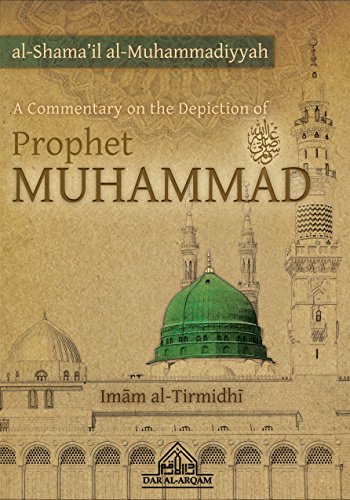Overall Rating 5/5: Strongly Recommend
Considering the importance and wide acceptance of Imam at-Tirmidhi’s famous book Shamā’il Muhammadiyyah, it is not surprising that several English translations have been undertaken in the last decade. Unlike a seerah book which gives a chronological narrative of the Prophet ﷺ’s life, the Shama’il consists of 399 narrations which give snapshots of the appearance, manners, belongings, and character of the Prophet ﷺ.
A few years ago, one translation into English was done under the title The Compendium of Prophetic Beauty: As-Shamail Al-Muhammadiyya. It went out of print faster than I could purchase a copy. Another translation was released under the title A Portrait of the Prophet As Seen by His Contemporaries: As-Shamail Al-Muhammadiyya. It too was printed in such a limited quantity that by the time I’d heard of the translation and placed an order for the book, it had gone out of print. There is one more translation published that is easier to obtain and that is simply entitled Shamail Tirmidhi with commentary by Maulana Muhammad Zakariyyah Kandahlawi.
The newest translation of the Shamail into English was done by Dar al-Arqam publishing and was released in April 2015. It is entitled A Commentary on the Depiction of Prophet Muhammad. I recently finished reading this book and found it to be excellent. This edition is of quality print with clear Arabic text that include diacritical marks. The translation flows well and is in readable English. There is a short commentary after most narrations. According to the introduction, it draws from the works of 40 different commentaries. While I did not keep a note of frequencies, some scholars did appear more often than others. Of the most frequent names in the commentary are: Abdul Razzaq al-Badr, Ibn Hajar al-Asqalani, Ibn Hajar al-Haytami, Mulla Ali al-Qari, and al Bajuri. Many more scholars are quoted but these are the names I noticed recurring most often.
In the appendix of the book is a list of hadith which were deemed weak and what exactly in the isnad makes it weak. This is probably more useful for someone who can grade ahadith but the inclusion is still a nice addition. At the very least, it would caution someone from using them in a khutbah without double checking the authenticity.
Overall, this is a very well done translation and commentary and deserves a place on every Muslim’s bookshelf. (Not having read the other translations, I cannot say the others are any less deserving!)
Note: All reviews of classical Islamic texts are reviews of the quality of translation into English, not reviews of the source material.


Leave a Reply